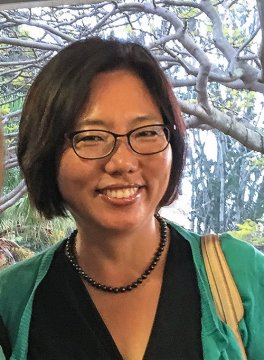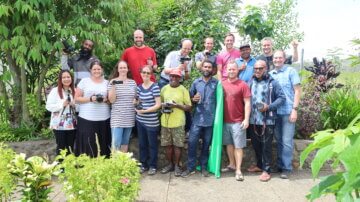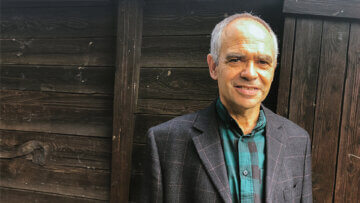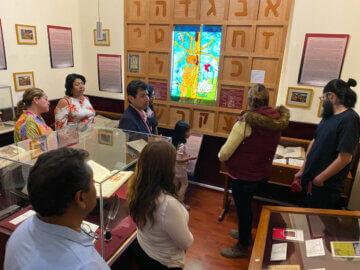Oral Bible Translation Moves to the Forefront
No conversation about the global Bible translation movement today is complete without mention of oral Bible translation and its impact. OBT grew from oral Bible storying, and is a strategic centerpiece in plans for every living language to have Scripture soon.
First, these short definitions:
Oral Bible storying (OBS): a Scripture engagement activity used to help introduce listeners to the Bible. A set of stories based on Scripture is crafted, learned, practised and ultimately shared.
Oral Bible translation (OBT): Translating Scripture from an audio recording in one language to an audio recording in the target language — often with no writing required.
For this article, we have combined a series of email and Zoom interviews into a conversation about oral Bible translation. Voices included are:
- Swapna Alexander, Lead Bible Translation Consultant, Faith Comes By Hearing
- Bryan Harmelink, Wycliffe Global Alliance Director for Collaboration
- Youngshin Kim, a YWAM leader in OBT training
Let’s address this right away: Is there any sort of negative competition between OBT efforts and traditional, written Bible translation?
Bryan Harmelink : No one working in OBT is trying to proclaim any kind of “OBT or nothing” kingdom in the Bible translation movement. But there are people who feel like OBT is the way the remaining translation needs are going to be met.

Bryan Harmelink
OBT is sometimes seen as an intermediate step in a community that eventually will translate a printed Bible, right?
Bryan Harmelink: Definitely. And I think there will be some places where there are restrictions on distributing print Bibles, where there may never be a widely distributed print Bible. And so OBT may be the best way in some high security situations to have Scripture available.
I think there’s been a tendency in a lot of the work that’s been done on orality, and in the Bible translation world, that for a long period of time was just meant the people involved in oral Bible storying. The move toward OBT is, in a sense, pushing the oral Bible storying methodology to a level that the results can be referred to as translation.
Bryan, you have said there’s a false dichotomy between what we have known as literate cultures and oral cultures. Can you expand on that thought?
Bryan Harmelink: There’s a common tendency to make this kind of oral-versus-print culture or oral-versus-literate. And some colleagues I know working in these areas now are trying to talk more about multimode modality. We all deal with, and live in the midst of, a mixture of things that are communicated orally, things that are communicated in print and things that are much more visual.
For some societies—and even people within what we call highly literate societies—essentially all of their interaction is oral: radio, podcasts, television, music, YouTube. But — and this is where some of the multimodality comes in — digital media already enforces or creates expectations of multiple modalities. You don’t get very far on YouTube, unless you’re just randomly clicking things, until you need some reading ability to choose the videos that you want. Same on your phone. To find certain things, you’ve got to have a certain level of using text, so to speak. But your preference may be that once you get what you’re looking for, then it’s all processed orally.
Some of the literature has characterized literate people as the ones who can think in abstract concepts. I think we have to question a lot of that way of thinking. There are so many incredible abilities and capacities of those who don’t use print. Their recall, their memory and their communication ability are phenomenal.
So it’s always hard to find the right terms to refer appropriately to different groups of people.
Swapna, you mentioned in your Global Connect conversation with Bryan that you have found OBT to be a spiritual exercise, where written translation sometimes can become more of an academic exercise. Could you expand a little on this? Certainly, written translation can have great spiritual value as well. But how has OBT been different for you as a consultant?
Swapna Alexander: First, let me apologize if in any way I hinted that a written translation project is not spiritual. That was not my intent at all. What I meant to say is that when we internalize a passage and make it our own, it talks to us in a different way than when we write it down. Internalization requires careful attention to the content in order to reproduce it orally as one’s own. The passage has to become our own, and in the process we identify with the content and it is taken to the emotional level.
One of the saddest comments I heard from a written translator long ago was, “I am translating the Bible, but it does not do anything to me spiritually. I am in no way edified.” I ran the comment through a senior translator and she responded that it is true, but she is impacted when she does OBT. I was shocked, as my experience was different. Our team of translators were really engaged with the content intellectually and emotionally. I attribute this difference to the components of orality we had in our project. One of the OBT translators I work with told me, “When we internalize stories, we get into the story and we become a part of the story. This is a very enjoyable experience.”
As I listen to OBT, I can feel the heart of the translator coming through. It is as though they are telling me their own stories. They themselves are surprised by the response of the people.
Bryan Harmelink: In a sense, what you find through the methodologies being used for OBT is a much more immediate engagement with Scripture. And even reversing the order that we’ve traditionally had of “do translation, then people engage with Scripture.” In the OBT process — and sign languages are similar in this way — there’s a lot of discussion that has to happen around the questions that need to be answered in order to translate. Say, when you read, “Jesus wept” — the text doesn’t indicate any emotion. I mean, it has a word that indicates emotion. But when you translate that orally, you have no choice but to give it some emotional feeling. Otherwise, it’s not a good oral communication of that. And so what do you do in situations where you just don’t know what the tone of voice was? What the attitude was?
A lot of things like that have to be discussed when you’re going to do an audio product. A print translation doesn’t always require that.
Are we seeing a shift in translation priorities in some communities, then?
Bryan Harmelink: This idea of changing or reversing the order of things is very possible. Scripture engagement is one of the goals with a group of people in a community, say, engaging with that story of Jesus and Lazarus. And out of that Scripture engagement activity, translation activity can emerge, with an almost better basis of understanding because of the level of engagement with Scripture. And so in that sense, this allows for much more direct spiritual engagement with people in the process of translation.
People saw the value of oral Bible storying as kind of a stepping stone toward use of the printed. Oral Bible storying was a more immediate way for people to gain access to the Scriptures. And I think that is what Swapna was getting at — all of the conversation and discussion that is a part of the oral Bible translation process is a much more immediate spiritual experience for the participants than a few people who are capable of doing the written translation while others have to wait until the translation is made available.
Can OBT work for non-narrative sections of Scripture? How would it work for, say, the book of Romans? Or for passages like the parts in Exodus that give God’s instructions for building the tabernacle?
Swapna Alexander: I would say that it is possible to orally translate non-narrative sections of the Bible because people talk all the time, and they talk in different genres, not just stories. So the key to translating different genres orally is in identifying the genre and its function and understanding the content (which in Pauline epistles is not easy). Once the translation advisor does the above two, he/she needs to communicate this to the translators creatively and effectively. Bryan Harmelink calls it “conversational discovery of meaning.”
While translating the book of Romans, we can start by talking about Paul’s arguments and his logic, discuss the context and even dramatizing. In the project I worked with, we decided that there is another character(s) who is questioning Paul and asking questions like “What then? Shall we go on sinning so that grace abounds?” And Paul responds, “No way!” This helped us internalize Romans well.
I have not done Exodus with a team, but I would start with talking about how to, say, build a house/furniture etc. and get into the “procedural text mode” and then talk about the content of the passage, even act it out to build memory and clarify the action verbs, and then translate orally. It is not easy and it takes hard work, but it is achievable. Not just achievable, probably better translated also.
Bryan Harmelink: That’s a very common question. But, sometimes I wonder if it’s not a reaction of someone who is primarily print-oriented and literate. It’s very easy for those of us with those tendencies not to recognize the incredible memory capacity of those who live in a narrative, oral world.
Those of us who consider ourselves literate think, Oh, we’ve got to have all these OBT methodologies for helping people remember and memorize and internalize. I’ve heard … comments about some people who have been trained in this way. And they’re like, "Why do you keep repeating this? We already know it. You already told it to us once. Why are you repeating it three or four times?”
I did participate in an experiment with part of the book of Colossians. And it was very challenging. I’ve heard that other people have done some of Paul’s letters with good success. And people have even internalized, say, the book of Galatians, and are able to retell the entire book and perform it in an oral way. It’s possible, but you do face challenges that are not that you don’t find with story.
My wife was telling me about a family. Someone had found a baseball card that he had as a child. And he was shocked that he could repeat, from memory, every statistic of that player from that card that he had seen years before. Now, I’m not saying everyone who is an oral communicator is like a digital recorder and just replays everything. But yet, many people will have incredible capacity that we almost don’t believe is possible—because (we reason if) we can’t do it, then nobody can do it.
What do you think accounts for the OBT momentum in these past few years?
Bryan Harmelink: One important piece, I think, is Faith Comes by Hearing and the development of the software Render. Even though there have been limitations in the software, new versions are going to be much more flexible and easier to use, which is the way things normally go.
In 2018 ... we brought together a multi-agency group of people to talk about some of these things. Not that we wanted in this group to enforce or make everyone follow the methodology that we might be discussing. Just to come together as a multi-agency group and have a good conversation about, what is it when we talk about oral Bible translation? I thought maybe eight or 10 people would be interested in attending. Thirty showed up! And a lot of partnerships and connections came out of that week together that might not have happened otherwise.
Another factor in the enthusiasm has been YWAM. There are a couple decades of history of interest there. Today (27 Sept.) is the first day of what they are referring to as the Mega OBT school. It has five locations simultaneously participating in the school.

Youngshin Kim
Youngshin Kim, YWAM: We have 80 students and 12 staff from 16 nations participating. We do have five countries – Papua New Guinea, the U.S. (Kona, Hawaii), Nigeria, South Africa, Switzerland. We had a very good start with a big picture — the vision of Every Tribe Every Nation and what God is doing among YWAM. Loren Cunningham (YWAM founder) encouraged these students to take hold of this task and emphasized the significance of Bibles on a local level. This initiative could lead to a great spiritual awakening in the world.
I think at least 70 percent of the students are in their 20s and 30s. This is certainly my highlight to see so many young people in the school!
Are there other factors contributing to the OBT momentum?
Bryan Harmelink: Perhaps just the realization that it’s not about acceleration. It’s more about the more-immediate access for the church to Scripture that will communicate widely to more people. And in some places, they may not even focus much on audio recording. They might prefer to have people in the churches who then go from place to place, telling these passages of Scripture. And the churches, activities and discipleship and evangelism might prefer to have storytellers rather than a recorded audio version, even though the audio version would be an important part of what the project would work on. But this is a way for there to be more direct, immediate use of Scripture in the church.
So I think that’s part of the enthusiasm. Some people have talked about how the oral translation method gives us a way to make our written translation more natural. I’m not convinced that’s really the point. The real question for me is, whether translation is being done in written form, an oral, audio form or in sign language— translation is best done on the basis of as thorough understanding as we can have of the Scripture to be translated. If the translator just “kind of” thinks they understand what Jesus was talking about, his translation is probably going to “kind of” give the idea of what Jesus was talking about.
And it’s not like we can have 100 percent comprehension of every part of Scripture, but (we can) develop a thorough understanding through multiple hearings and readings and discussion and asking all kinds of questions. Better translation will result from better understanding of the biblical text.
In a sense, it seems so simple. But sometimes I feel like translators are sitting down in front of Paratext and beginning at chapter one, verse one, before they really have a grasp of what it is they’re jumping into. And so, the more holistically developed our understanding can be of something like Paul’s relationship with the Philippian believers, the better the translation of Philippians. That kind of thing is not found in the word-by-word pieces of those books. It’s by developing a more holistic understanding of things that even the book itself doesn’t say. But we know about Paul’s relationship or the health of the church in those locations and other things. So I think there’s great potential in some of the OBT processes in even strengthening written translation practices.
Story: Jim Killam, Wycliffe Global Alliance
Alliance organisations may download and use the images from this article.
Related story: Through a consultant's eyes: A glimpse of oral Bible translation
The latest
View all articles
Informing, teaching, inspiring: PNG workshop teaches video storytelling for language communities
PNG workshop teaches video storytelling for language communities
Read more
Looking ahead at 2024
As the year unfolds, we marvel at the work of God in our rapidly changing world. And, we look forward to a number of gatherings and conversations intended to draw us together.
Read more
Telling the Bible's Story
It may come as a surprise that a museum is among the Wycliffe Global Alliance organisations.
Read more